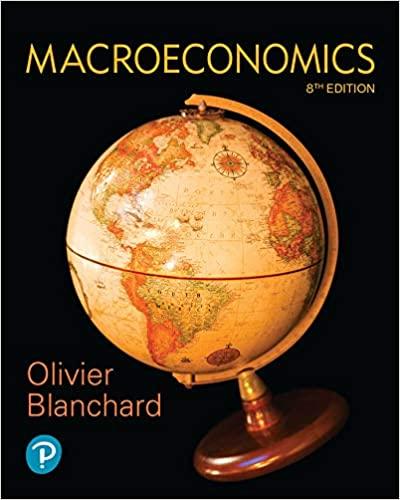Real and nominal exchange rates for Canada and Mexico Two of the largest trading partners of the
Question:
Real and nominal exchange rates for Canada and Mexico Two of the largest trading partners of the United States are Canada and Mexico. The FRED database at the Federal Reserve Bank of St. Louis maintains four series that are useful to us: A Real Broad Effective Exchange rate for Mexico (RBMXBIS); A Real Broad Effective Exchange rate for Canada (RBCABIS); the nominal exchange rate of Mexican pesos per U.S. dollar (EXMSUS); and the number of Canadian dollars per US dollar (EXCAUS). Download all the series monthly and organize to a spreadsheet where the start period is January 1994.
a. The exchange rate in FRED is defined as the number of Mexican pesos and the number of Canadian dollars per US dollar. Redefine them as the number of US cents per peso and the number of US cents per Canadian dollar. Why did you do that?
b. Make a time series graph of the redefined Mexican-US nominal exchange rate and the broad real exchange rate index, RBMXBIS, from 1994 to the end of your data. Do you see a period where the nominal exchange rate is pegged? When the peg was released, did the peso appreciate or depreciate? Is there a period where the peso is appreciating in nominal terms and depreciating in real terms? Around what year did the real exchange rate index take its highest value? What is the behavior of the peso in real terms from its peak to 2018? How did that behavior impact the Mexican economy?
c. Make a time series graph of the redefined Canadian-US nominal exchange rate and the broad real exchange rate index, RBCABIS. Estimate the percentage fluctuation in the Canadian-US real exchange rate index from 1994 to the end of your data. Is there a period where the Canadian dollar was pegged? Explain why the real exchange rate index tracks the nominal exchange rate closely in the CanadianUS case. Would there have been any benefits to pegging the Canadian dollar to the US dollar over this period?
Step by Step Answer:





